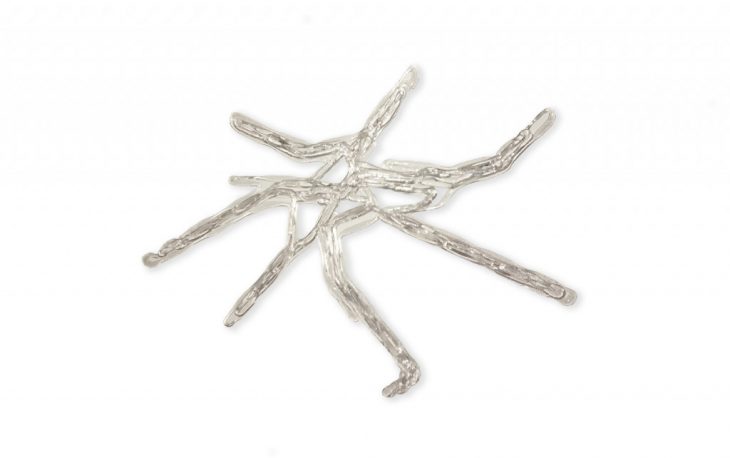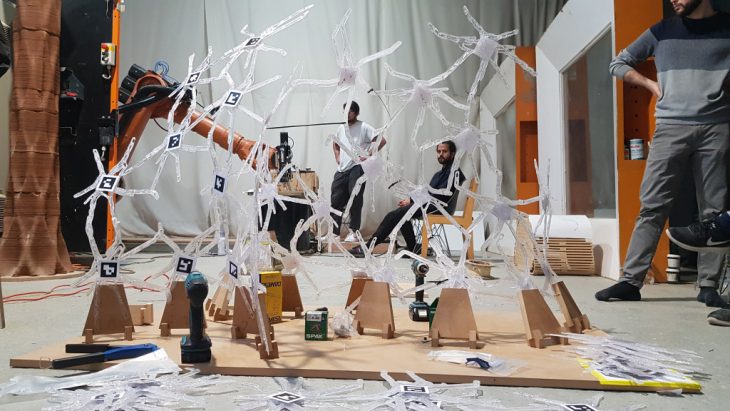ROBOTIC AND MIXED REALITY
Workshop 3A | MRAC 2018-2019
Faculty: Roland Snooks
Faculty assistants: Natalie Alima | Kunaljit Chadha
Student: Apoorv Vaish
AIM
The goal of this workshop was to explore real-time fabrication using 6-axis robots, augmented reality for assembly, reinforcement of structures using 6-axis printing and agent-based self-organizing structures for design.
FABRICATION
We had access to a WASP pellet extruder for fabricating number-coded components from the design and pass on to the assembly team. However, the pellet extruder had to be calibrated for PETG pellets:
- Extrusion temperature ~ 210 degrees Celcius
- Extruder Screw-speed ~ 17-25 RPM (revolutions per minute)
- Robot-printing speed ~ 2 cm/sec

These parameters were set by visually inspecting the print qualities like the presence of bubbles, extrusion width. The layer height was decided to be approximately 2.2 mm. The presence of bubbles was narrowed down due to one of the two possibilities:
- Pellets were out in the open and exhibited these bubbles due to moisture adsorption.
- The heating elements couldn’t heat the material as quickly at the flow rates we were testing.
On the robot hardware side, we started printing with the Kuka Iiwa and calibrated the number of commands we could send as a buffer to the robot for it to go through all the points. However, after the 3rd day we were forced to move to a conventional 6-axis robot as the “cobot” stopped responding to any commands.
The extruder assembly worked as an independent system from the robot. This meant that simple tasks as switching on the extruder motor or the fans were left for manual switching. The only sensor in the system was the thermistor which would switch the current to the heating bands on or off based on the current temperature.

CONCLUSION
- 80 disparate assembly components were printed where each component had 3 layers.
- These components were printed in random order as directed to us by the assembly team. An assembly logic dictating the fabrication order of components could make the process smarter by reducing the communication gaps between different teams.
- The motors, as well as the speed control, could be easily integrated into the robot code and a relay can be added to the stepper motor driver circuit making the process more automated.
- As a further improvement, vision systems and basic PID controllers could be used to facilitate constant extrusion width.
Workshop 3A | MRAC 2018-2019
Faculty: Roland Snooks
Faculty assistants: Natalie Alima | Kunaljit Chadha
Student: Apoorv Vaish